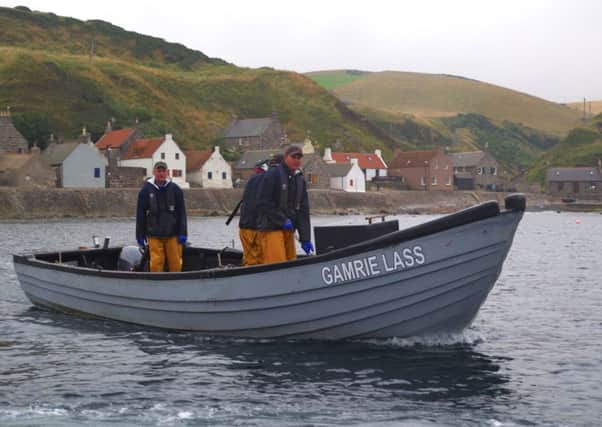Documentary records how an unlikely alliance ended salmon netting in Scotland


Now the struggle of the Pullar family – who described themselves as “one of the most hated fishing families in Scotland” – has been documented in a new film, Of Fish and Foe, which charts the last days of their fishing ways and the efforts to bring down their business.
Once there were hundreds of fishermen like the Pullars working the coast, laying nets in the sea to catch salmon – or bars of silver as they are also known – on their journey from their ocean back to the rivers where they were born.
Advertisement
Hide AdAdvertisement
Hide AdBut the old methods came under increasing scrutiny in recent years. In order to protect their lucrative catches, the Pullars had a Scottish Government licence to shoot just over 100 seals every year, with the killings vehemently opposed by Sea Shepherd Conservation Society and the Hunt Saboteurs Association, who claimed that some seals were being shot unnecessarily.
Filmmakers Andy Heathcote and Heike Bachelier, who are based in Fife, spent a summer season following the Pullars at work and witnessing the controversy from all angles for Of Fish and Foe, which goes on general release on July 26.
Heathcote said: “I was always aware of the salmon net fishermen and knew they were a bit controversial. There were so few of them left that I started wondering how long they could survive. When some of the environmentalists started getting involved, I realised they were facing a lot of pressure.”
Activists are seen in the film closely tracking the movements of the Pullars, on land and sea, as they worked off the shore at Montrose, Gardenstown in Moray and Murkle in Caithness.
The parties are captured filming each other as a hostile game of cat and mouse is played out with claims of intimidation and provocation rife.
Attempts to disrupts and halt the work of the Pullars leads to the police being called on several occasions.
Heathcote described the atmosphere between the parties as “difficult” and “very, very tense” at times.
He said: “Sometimes someone would come up with an argument and you wanted to pick it up and challenge but our job is only to document the scene and document what is there to allow people to come to their own conclusions.”
Advertisement
Hide AdAdvertisement
Hide AdOf Fish and Foe also charts opposition to the Pullar’s activities from representatives of the the angling industry, including river owners and river bailiffs, who want the fish to naturally return to river and support Scotland’s international reputation as a prize destination for salmon fishing,
Both the Salmon and Trout Association and the Esk Rivers Salmon Fisheries Board, both which have been chaired by Angus estate owner Hugh Campbell-Adamson, were opposed to the Pullar’s activities.
A complaint was lodged with the EU that the Pullar’s activities were in breach of a directive on habitats, with the Pullar’s licence to lay salmon nets then suspended given there was no way of knowing if the fish caught was destined for a river where salmon stocks were running low. Science is now being sought to prove the destination of the fish.
Bachelier said: “The Pullars were really destroyed by the closure. It is really, really sad and they are a bit beaten down.”
In the year of filming, anglers killed more salmon than the netsmen.
The Pullars were find £7,000 in 2015 for illegal salmon fishing after they failed to comply with rules and bring in their nets over the weekend to give salmon the chance to return to river. It was argued in court that poor weather had led to the nets remaining in place. The Salmon and Trout Association Scotland said the y had committed a “serious wildlife crime”.
Both the salmon netters and the angers cause the death of roughly equal numbers of fish, Heathcote said. Many salmon released by anglers later die from the trauma, injury or disease caused by mishandling, he added.
He said: “It is an end of an era for the Pullars but there has been an injustice too. Just because angling brings in money from tourism doesn’t make it right for them to continue catching a threatened species while the Pullars are stopped.”